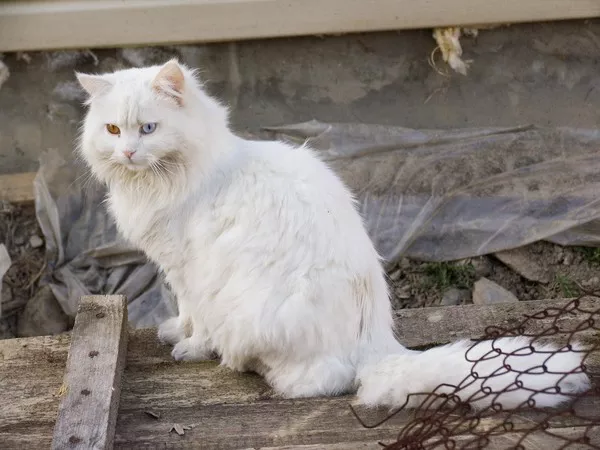Cats are beloved pets for millions of people worldwide, and their health and well-being are paramount to their owners. When considering how to provide the best environment for cats, a significant debate arises: are indoor cats healthier than outdoor cats? This article delves into the health implications of both indoor and outdoor living for cats, examining the advantages and disadvantages of each lifestyle.
The Difference Between Indoor and Outdoor Cats
The lifestyle of a cat—whether it is primarily indoors or outdoors—can significantly influence its overall health. Understanding these distinctions can help cat owners make informed decisions regarding their pets’ well-being.
Indoor Cats
Indoor cats are those that live predominantly within the confines of their owners’ homes. While they may have access to small outdoor spaces, such as balconies or enclosed patios, their primary living environment is indoors.
Safety and Security
One of the most significant advantages of indoor living is safety. Indoor cats are less exposed to various dangers that outdoor cats face, including traffic accidents, predators, and aggressive animals. By keeping cats indoors, owners can protect them from potential injuries or life-threatening situations. Indoor cats are also less likely to be victims of theft or abuse, which can sadly occur in some neighborhoods.
Reduced Exposure to Diseases
Indoor cats are typically at a lower risk of contracting infectious diseases. Common diseases among outdoor cats include feline leukemia virus (FeLV), feline immunodeficiency virus (FIV), and various parasites such as fleas, ticks, and worms. By minimizing their exposure to other animals and the outdoors, indoor cats are less likely to encounter these health risks.
Stable Environment
Indoor cats often enjoy a more stable and controlled environment. They are less likely to experience extreme weather conditions—such as heat, cold, rain, or snow—that can impact outdoor cats’ health. Additionally, a stable environment can contribute to reduced stress levels, which is vital for overall health.
Nutrition and Regular Vet Visits
Indoor cats often benefit from consistent nutrition and access to fresh water. Owners can provide balanced diets, monitor their food intake, and ensure they are receiving the necessary nutrients. Moreover, indoor cats are more likely to receive regular veterinary care, including vaccinations, dental care, and health check-ups.
Mental Stimulation and Enrichment
While some may argue that indoor cats lead less fulfilling lives, many cat owners have found ways to enrich their pets’ indoor environments. Providing interactive toys, climbing structures, and mental stimulation can help keep indoor cats engaged. Moreover, creating a safe space near a window can offer indoor cats a view of the outside world, which can satisfy their curiosity.
Outdoor Cats
Outdoor cats, on the other hand, live in a more natural environment, allowing them to roam freely and explore their surroundings. While this lifestyle has its benefits, it is essential to understand the associated risks.
Natural Behaviors and Instincts
Outdoor cats have the opportunity to engage in natural behaviors that are instinctive to their species. They can hunt, climb trees, and explore new environments, which can be mentally and physically stimulating. This exploration can lead to enhanced physical fitness and exercise, as outdoor cats are generally more active than their indoor counterparts.
Social Interactions
Outdoor cats can also have more opportunities for social interactions with other animals, which can help them develop social skills and behaviors. They may encounter other cats, birds, and wildlife, enriching their sensory experiences.
Exposure to Nature
Being outdoors allows cats to experience the sights, sounds, and smells of nature. This exposure can contribute to their overall well-being and happiness. The freedom to roam and explore can be fulfilling for many cats, providing them with a sense of independence.
See Also: What Do Manx Cats Like To Do?
The Risks of Outdoor Living
Despite these benefits, outdoor living poses several risks that can significantly impact a cat’s health and longevity.
Traffic Hazards
One of the most significant dangers for outdoor cats is the risk of traffic accidents. Many cats are struck by vehicles, leading to severe injuries or fatalities. Even in neighborhoods with low traffic, cars can pose a danger, especially in areas where drivers may not be vigilant for small animals.
Predators and Aggressive Animals
Outdoor cats may also fall victim to predators, such as coyotes, dogs, and birds of prey. Additionally, they may encounter aggressive animals, leading to injuries from fights or attacks. These encounters can result in severe health complications, including infections from bites or scratches.
Exposure to Diseases and Parasites
Outdoor cats face a higher risk of contracting various diseases and parasites. They can come into contact with other animals, increasing the likelihood of exposure to FeLV, FIV, and other infectious diseases. Additionally, they may encounter fleas, ticks, and worms, which can lead to significant health problems if not promptly addressed.
Environmental Hazards
Outdoor cats are susceptible to environmental hazards, such as extreme weather conditions, toxic plants, and chemicals. Cats left outside during extreme temperatures may suffer from heatstroke or hypothermia, while exposure to toxic substances can result in poisoning or other health issues.
Behavioral Concerns
Outdoor cats may develop behavioral issues due to their environment. For example, they might become more aggressive or territorial, especially if they encounter other cats. This aggression can lead to fights, further endangering their health. Additionally, outdoor cats may be less socialized with humans, making them more difficult to manage as pets.
Regular Veterinary Care
Regardless of whether a cat is indoor or outdoor, regular veterinary care is crucial. Routine check-ups, vaccinations, and preventative treatments can help maintain a cat’s health. For outdoor cats, additional precautions, such as flea and tick prevention, may be necessary to reduce the risk of disease and infestation.
Considering Lifestyle Changes
Lifestyle changes can influence the decision regarding indoor versus outdoor living. For instance, if an owner moves to a more urban area with increased traffic, it may be safer for their cat to transition to an indoor lifestyle. Conversely, if a cat has previously lived indoors, introducing outdoor experiences may require gradual acclimatization to ensure their comfort and safety.
From Indoor to Outdoor
If considering transitioning an indoor cat to an outdoor lifestyle, the following steps can help:
1. Gradual Exposure: Begin by allowing the cat to explore a secure outdoor space for short periods. This could be a backyard or an enclosed area where the cat can safely experience the outdoors.
2. Supervised Exploration: Supervise outdoor time to ensure safety. Gradually increase the duration of outdoor experiences as the cat becomes more comfortable.
3. Monitoring Behavior: Observe the cat’s behavior and body language during outdoor time. Ensure they are relaxed and not showing signs of stress or fear.
4. Fleas and Ticks Prevention: Consult with a veterinarian about appropriate flea and tick prevention measures before allowing outdoor access.
From Outdoor to Indoor
For outdoor cats transitioning to an indoor lifestyle:
1. Create a Stimulating Indoor Environment: Provide engaging toys, scratching posts, and vertical spaces for climbing to encourage exploration indoors.
2. Establish Routine: Implement a daily routine that includes playtime, feeding, and quiet time to help the cat adjust to indoor living.
3. Monitor Health: Regular veterinary visits are crucial to ensure the cat’s health is maintained during the transition.
4. Be Patient: Understand that adjustment may take time. Some cats may resist indoor living initially, but with patience and positive reinforcement, they can adapt to their new environment.
Conclusion
In the debate over whether indoor cats are healthier than outdoor cats, several factors mgenerally enjoy a safer environment with reduced risks of injury, disease, and environmental hazards. They benefit from consistent nutrition, regular veterinary care, and a controlled lifestyle that promotes their overall well-being. However, outdoor cats experience natural behaviors, social interactions, and exposure to nature, which can be enriching and fulfilling. The decision depends on the individual cat’s personality, the owner’s lifestyle, and the specific environment. By understanding the pros and cons of each lifestyle and making informed choices, cat owners can create a happy and healthy life for their beloved pets, whether they choose to keep them indoors, allow limited outdoor access, or provide a balance of both.
Related Topics
Why Can’t Burmese Cats Go Outside?
The Impact of Free-Roaming Cats on Wildlife and Disease Transmission


























